Employability Skills: Job 'Currency' of the Future
Experiential Education

Objectives
What you will learn:
- What employability skills are
- What characteristics, attributes, behaviours and values are valued in the workplace
- How to acquire, develop and evidence those skills in your Employability Portfolio

Introduction
Changes in the workplace landscape and the evolving nature of employment has meant that both employees and employers need to be adaptive. The future of the workplace involves being ready for change and developing skills that are portable across positions and employments. These skills, known as employability or transferable skills, are highly valued by employers because they can ‘transfer’ across a variety of roles, positions and contexts. In that same way, they are valuable to you because you are more employable having a range of abilities, qualities and aptitudes .
The list of employability skills is varied and expansive, however there is consensus about some of the main themes, those being:
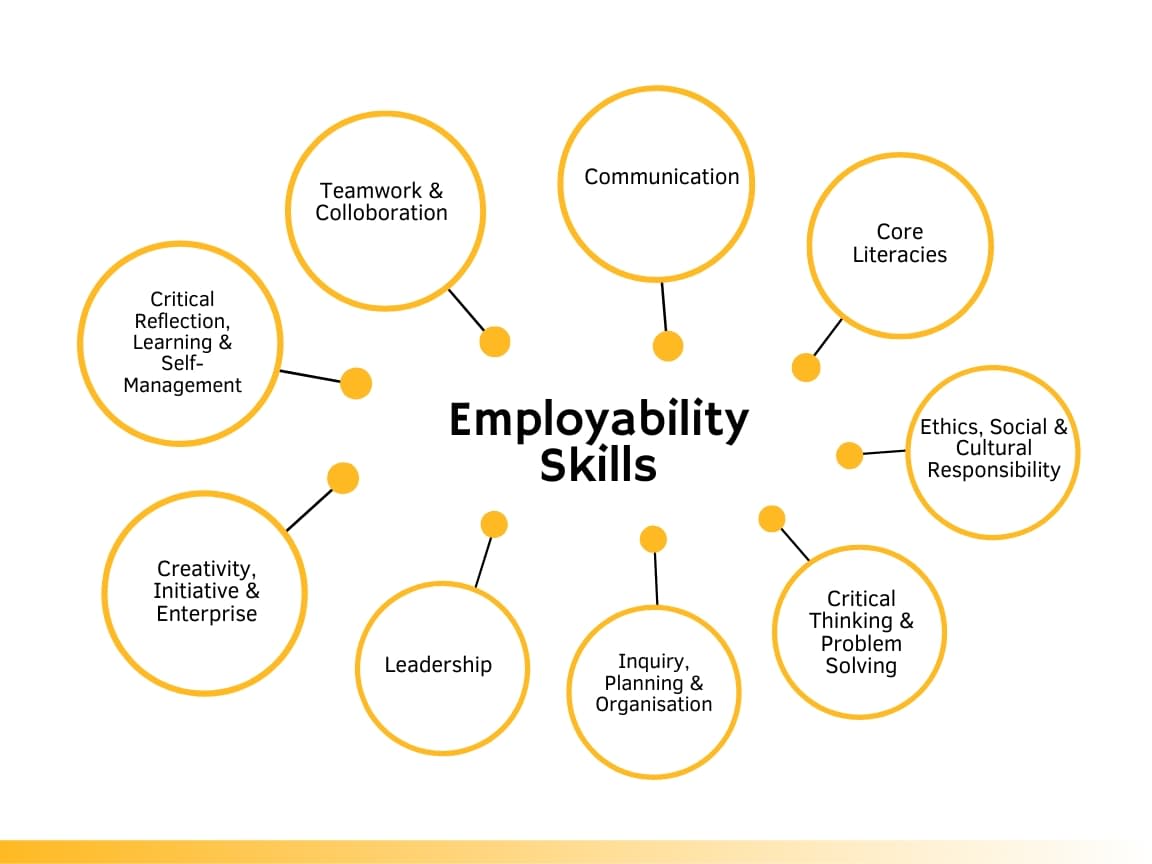
In this module, we’ll provide information on the attributes and qualities of each of the skills area listed above, discuss how they can be further developed, and suggest ways that you might evidence them in your Employability Portfolio.
A couple last items to note:
- At University College the word ‘artefacts’ is used throughout the module – this term refers to anything that documents your skill development (e.g. written text, video, graphics, etc). For more information on artefacts visit the Portfolio Artefacts module.
- The Employability Portfolio is your professional folder which showcases the development of these important skills . This Employability Portfolio will be shared with you by Academic Coaches, and opportunities to attend informational sessions provided through the Semester.
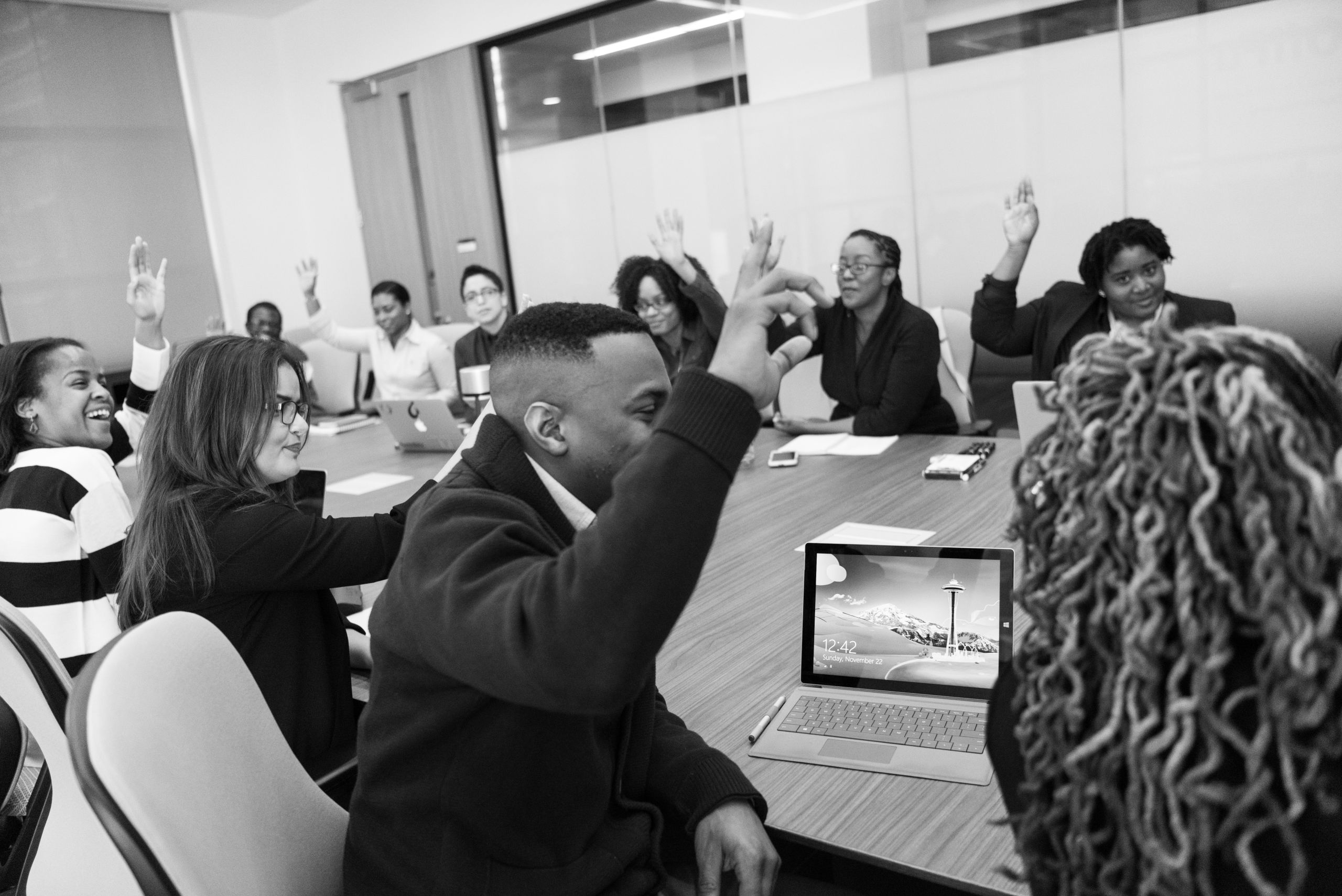
Communication
The ability to communicate effectively is an essential skill and recognised as one of the most important employability skills. In fact, many of the other skills are underpinned by good communication skills. For example, one aspect of good leadership relies on the ability to communicate and motivate people.
Effective communication skills are sought after by employers in almost all areas of work. When, and how, you communicate affects how others perceive you and how your message is received. Therefore, communicating effectively in your professional and personal life ultimately means that you develop better organisational performance in your job and relationships.
Communication is the solvent of all problems and is the foundation for personal development.
Communication can be defined as the process of transmitting messages to create shared meaning. The function of communication is to inform, persuade and promote goodwill with those inside and outside the workplace. For this reason, good communication skills are a key attribute that employers expect their staff to be competent.
In regards to this skill, employers expectations for their employees include the ability to:
Present ideas and information |
||
| Present your ideas and information accurately and effectively in different contexts, audiences and purposes. |

|
|
Actively listen to others |
||

|
Actively listen to the diversity of opinions and ideas and take actions based on what has been communicated. | |
Use communication technologies |
||
| Utilise communications technologies efficiently and effectively, such as email, webrooms, social media. |

|
|
Communicate professionally and ethically |
||

|
Demonstrate professional and ethical communication skills in all verbal, nonverbal and written communications. | |
Interpret information |
||
| Interpret and evaluate information that is presented in different forms (e.g. words, graphs, flowcharts, diagrams, tables, spreadsheets, audio). |

|
|
(Dwyer 2013)
Evidence
Some of the types of artefacts that can be used to evidence your communication skills include:
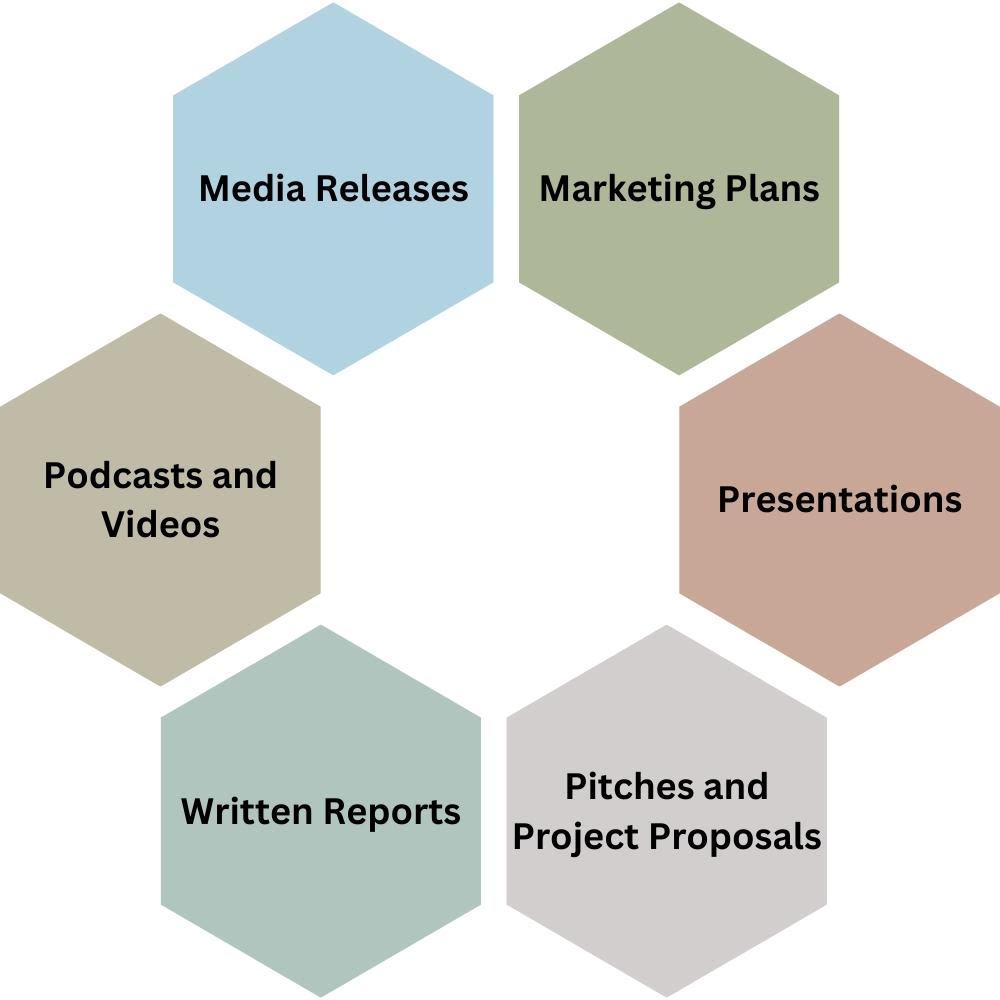
Further information/reading
If you would like to review more material on communication, and find ideas about other evidence you may use to promote communication skills, please click on the modules below:
The Foundations of Communication
Selling Your Product (Pitches/Proposals)
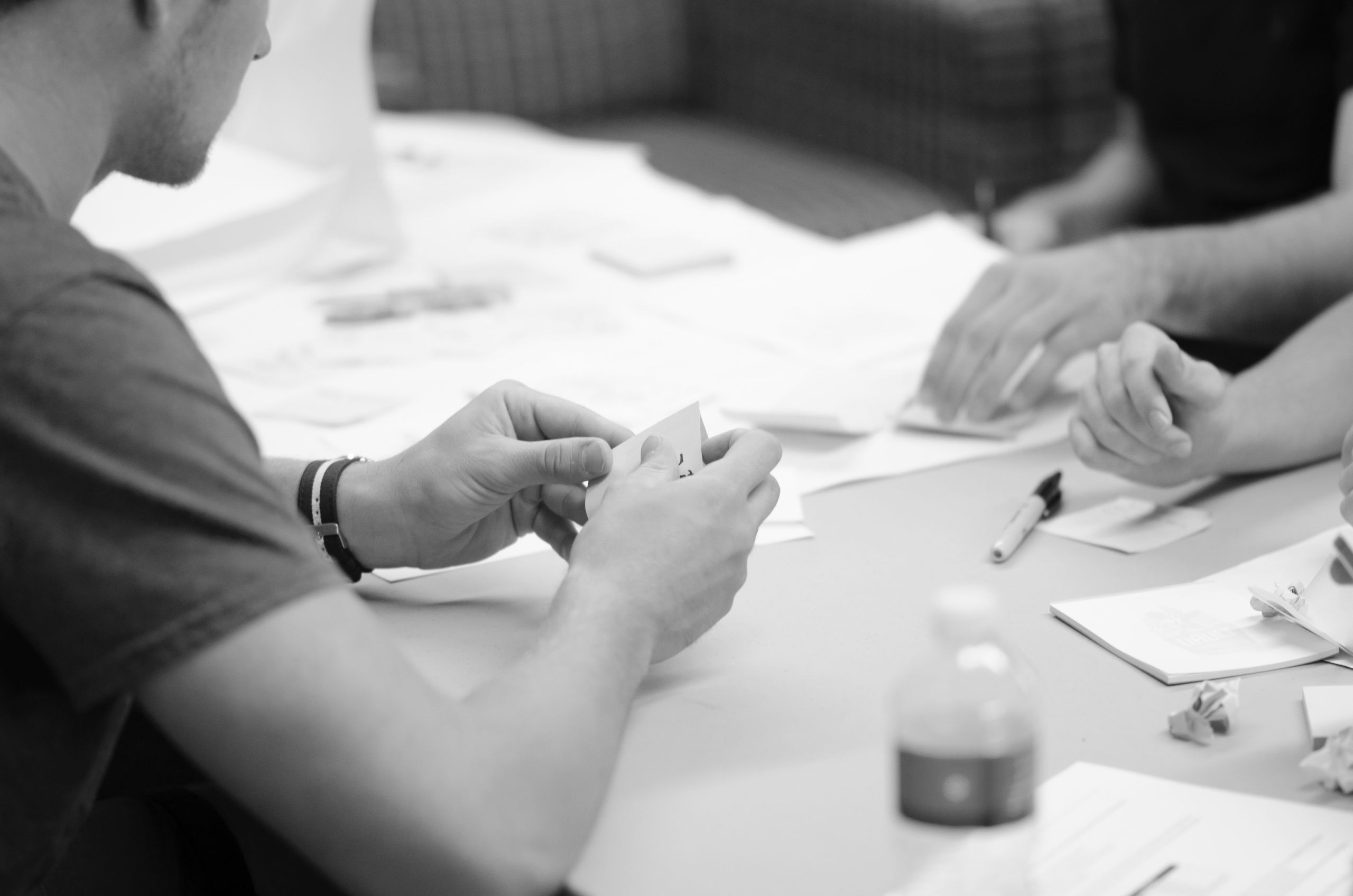
Core Literacies
Literacy means having competence or knowledge in a specific area. There are many areas of our life - personal, professional, and academic - where it is important to have certain core literacies, or competencies.
Below is a list of core literacies with a brief explanation of each:
Information Literacy: |
||
| The set of skills to locate, evaluate and use appropriate information effectively (e.g using peer-reviewed research, proper citation of information). |

|
|
Media Literacy: |
||

|
The ability to access, analyse, evaluate and create various forms of media (e.g. video, posters). | |
Digital Literacy: |
||
| Using the appropriate digital tools in order to complete a task effectively and efficiently (e.g Excel for calculations, SmartArt for creating a process graphic). |

|
|
Critical Literacy: |
||

|
Involves analysing texts using critical reading and thinking strategies to move behind the literal interpretation. | |
Financial Literacy: |
||
| The knowledge, skills and resources needed to make informed decisions on financial matters. |

|
|
Numeracy: |
||

|
The ability to use mathematics in a range of situations. | |
Evidence
Some of the types of artefacts that can be used to evidence your skills in the various areas of literacy include:

Critical Thinking & Problem Solving
Critical Thinking
Critical thinking is deliberately and systematically processing information so that you can make better decisions and generally understand things better.
It is the skill of taking a metaphorical step backwards and examining an issue from as many angles as possible in the most objective manner possible, to make a considered judgment. Critical thinking requires you to consider all available information to enable a reasoned judgment.
It’s not that I’m so smart, it’s just that I stay with problems longer.
A Critical Thinker:
(Adapted from Skills You Need [SYN] 2017)
Evidence
A good start to evidence your critical thinking skill development would be to look at the dot points above and thinking about how you might find evidence that highlights any of them.
In addition, you may have evidence that is very similar to what you would upload for problem solving (further down the module), because to be a good problem solver, you need to be a critical thinker. Other skills needed for critical thinking include:
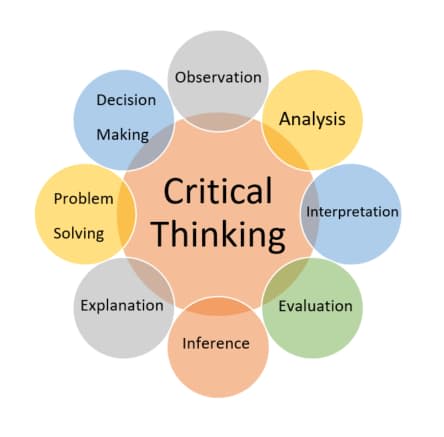
(Adapted from SYN 2017)
(Adapted from SYN 2017)
Problem Solving
Effective problem solving often requires you to collect, process, analyse and evaluate information to find a solution (or solutions). Along with other employability skills like communication, planning and organisation, teamwork, critical thinking, digital literacy, and active inquiry (for example), it is essential in work and in life in general.
There are a few different stages in the problem solving process, which makes it a little more complicated than it probably sounds. These steps include:
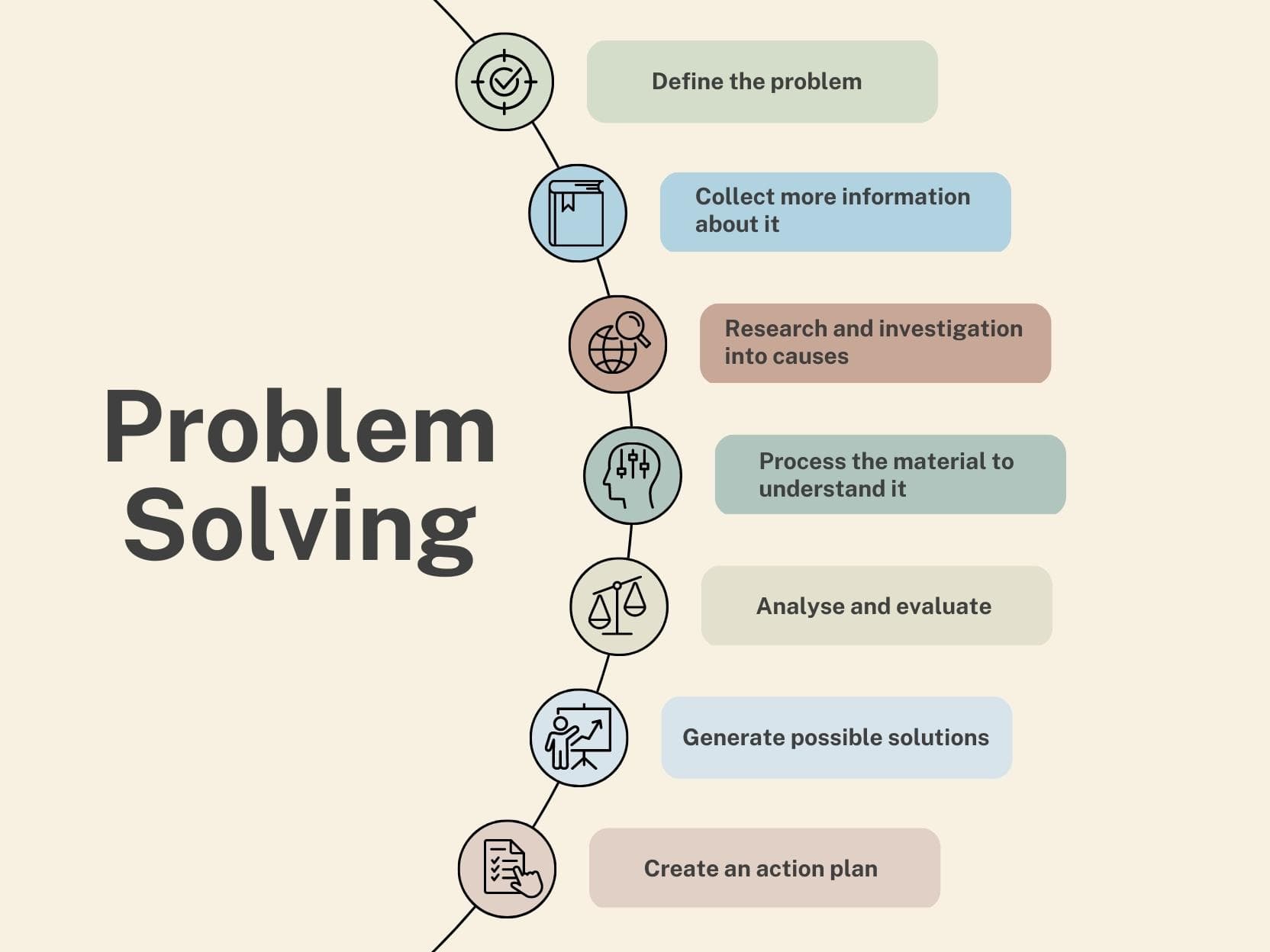
Evidence
The evidence, or artefacts, you might include in your Employability Portfolio to show the development of this skill are listed below:
- Mind Mapping
- Brainstorming
- The Fishbone Diagram (or Cause and Effect Diagram)
- Affinity Mapping
- The 5W’s (and the 5 WHY’s)
- SWOT Analysis
NOTE: These tools will be introduced to you in your units.
Other evidence might include drawings, sketches, photos, or videos with explanatory notes (or voice-overs) to show how you used a design thinking or action learning approach to solving a problem or how you worked on a wicked problem or applied appreciative inquiry. Alternatively, you could upload evidence of any kind that highlights problem-based learning experiences that you engaged in.
Upload evidence that shows you can:
- assess a situation and identify problems
- seek different points of view and evaluate them based on facts
- be creative and innovative in exploring possible solutions
- readily look at and use the evidence-base to think, gain, and share knowledge, solve problems, and make decisions
- evaluate and implement solutions or decisions
- act on opportunities for improvement
(Adapted from The Conference Board of Canada 2019)
Further information/reading
If you would like to, you can review more material on Critical Thinking in this module.
If you want to, you can review more material on Problem Solving Tools and Techniques in this module.

Inquiry, Planning and Organisation
Active Inquiry
Millions saw the apple fall, but Newton asked why.
'Inquiry' is searching for information or understanding. It involves questioning, investigating and communicating. Inquiry is often employed as a skill when engaged in problem-based learning or project-based learning or when design thinking approaches are applied to explore and understand issues and generate solutions.
Inquiry is more likely to occur in active learning contexts that involve posing questions and discussing potential solutions.
Working on wicked problems, applying the method of appreciative inquiry or completing local projects might also draw on your inquiry skills.
Evidence
Evidence of your ability to inquire might therefore include:
Planning and Organisation
The ability to plan and organise is highly valued by employers. These skills are needed to ensure all tasks in every project are identified, outlined and actioned to ensure objectives can be met.
| In addition, planning and organising requires thinking outside the box about what might go wrong and having strategies in place for damage control. |

|
|

|
These skills are often associated with leadership and are necessary in project and people management if goals are to be achieved within time frames. | |
| Good planning and organisation keeps teams on task and increases productivity and efficiency. |

|
|
According to The Complete Leader (2023):
Effective planning and organization require the ability to create and use logical, systematic processes to achieve goals.
Evidence
Evidence of your ability to plan and organise may include:
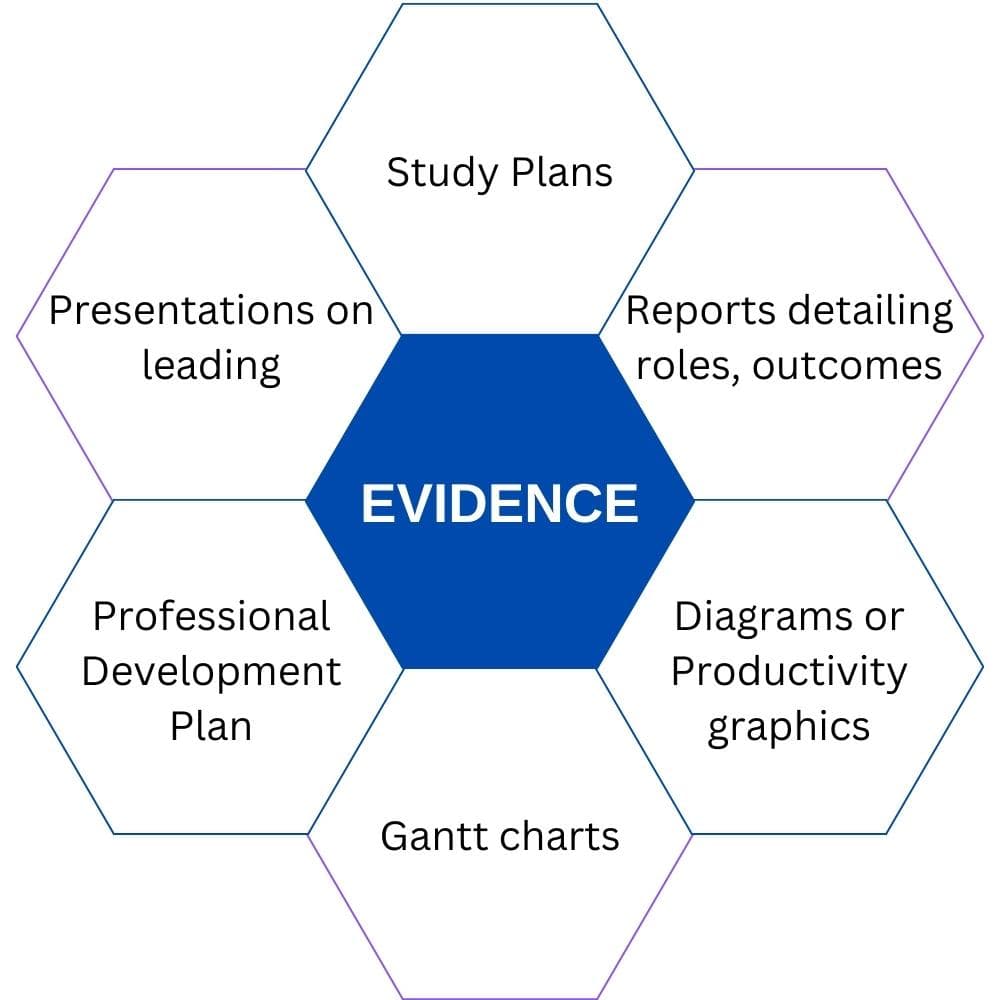

Teamwork and Collaboration
Coming together is a beginning, staying together is progress, and working together is success.
The ability to work in teams and collaborate with others is highly sought after in contemporary work environments.
Working in teams often includes:
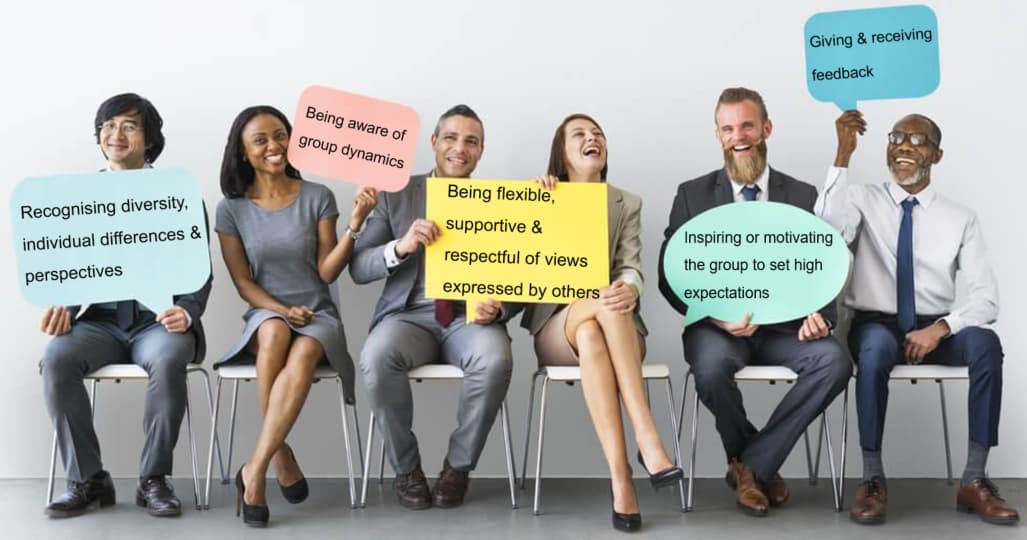
As well as it also includes:
| Leading and supporting team members |

|
|

|
Sharing information and expertise | |
| Managing conflict |

|
|

|
Planning, designing and implementing projects or events | |
| Developing, revising and implementing plans |

|
|

|
Using the right tools and technology for a task or project | |
| Continuously monitoring activity and making improvements |

|
|
Evidence
Some of the types of artefacts that can be used to evidence your skills in this area include:
Further information/reading
For ideas on what types of evidence you can collect, and more material about teams and group work, please review Team Roles and Group Work.
Alternatively, you might explore websites and articles, such as the excerpts from 'Employability Skills 2000+' (The Coference Board of Canada 2019).
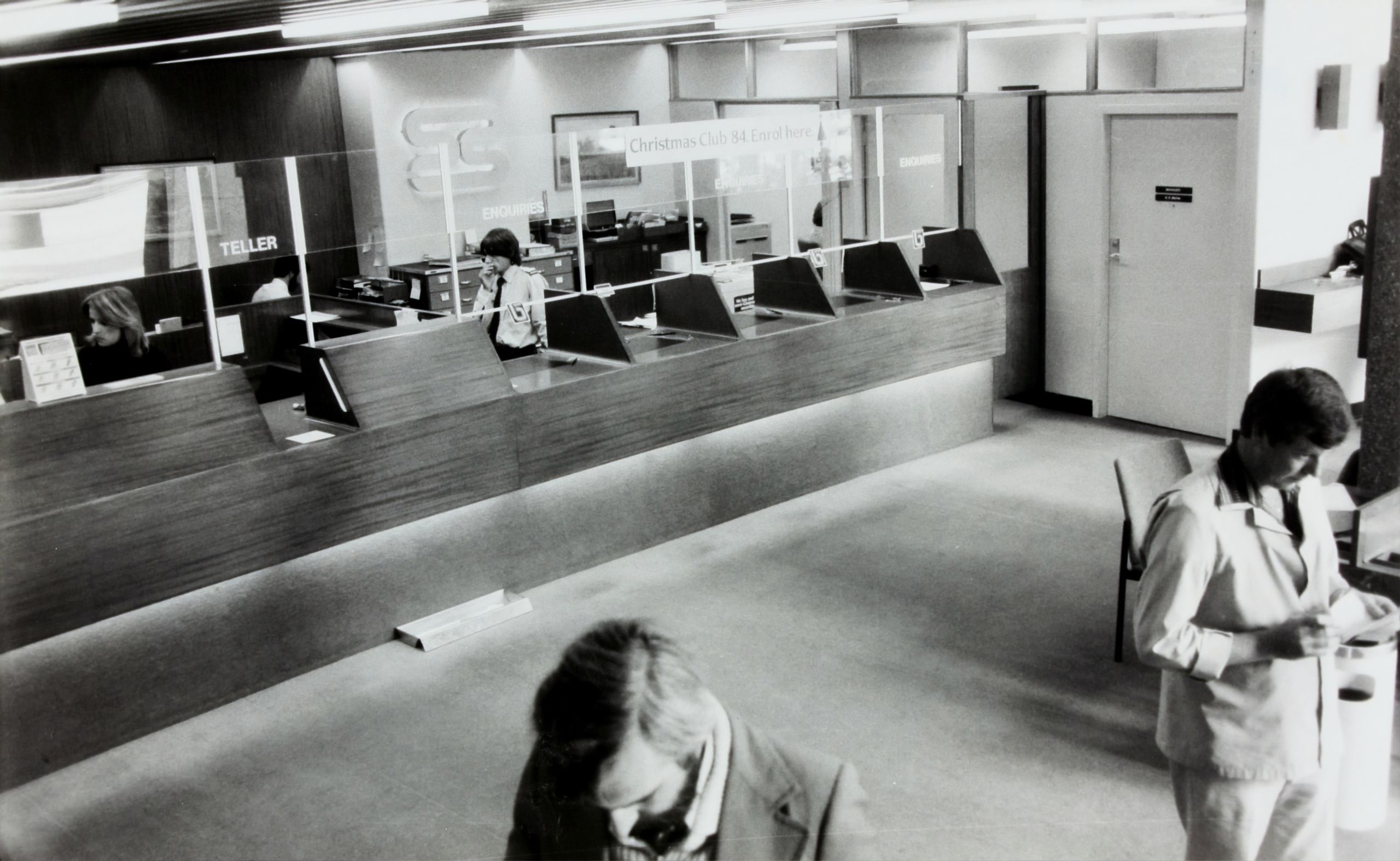
Ethics and Social Responsibility
Ethics and social responsibility are connected with doing the ‘right thing’; that is, being guided by strong moral principles and acting for the benefit of others. Ethics are important for our own sense of worth, as well as for the betterment of society.
Ethics are demonstrated in the way we problem-solve, our decision-making, our contribution to teamwork and our nonverbal and verbal communication.
Social responsibility involves being aware of and accountable for your individual actions and the decisions which affect the group, community and society. Some of the attributes of being socially responsible include equity, sustainability and sensitivity to diverse populations.
Evidence
Some ways you might evidence ethical behaviour and social responsibility are:
Further Information/Reading
There is also an ethics module you may find useful to explore:
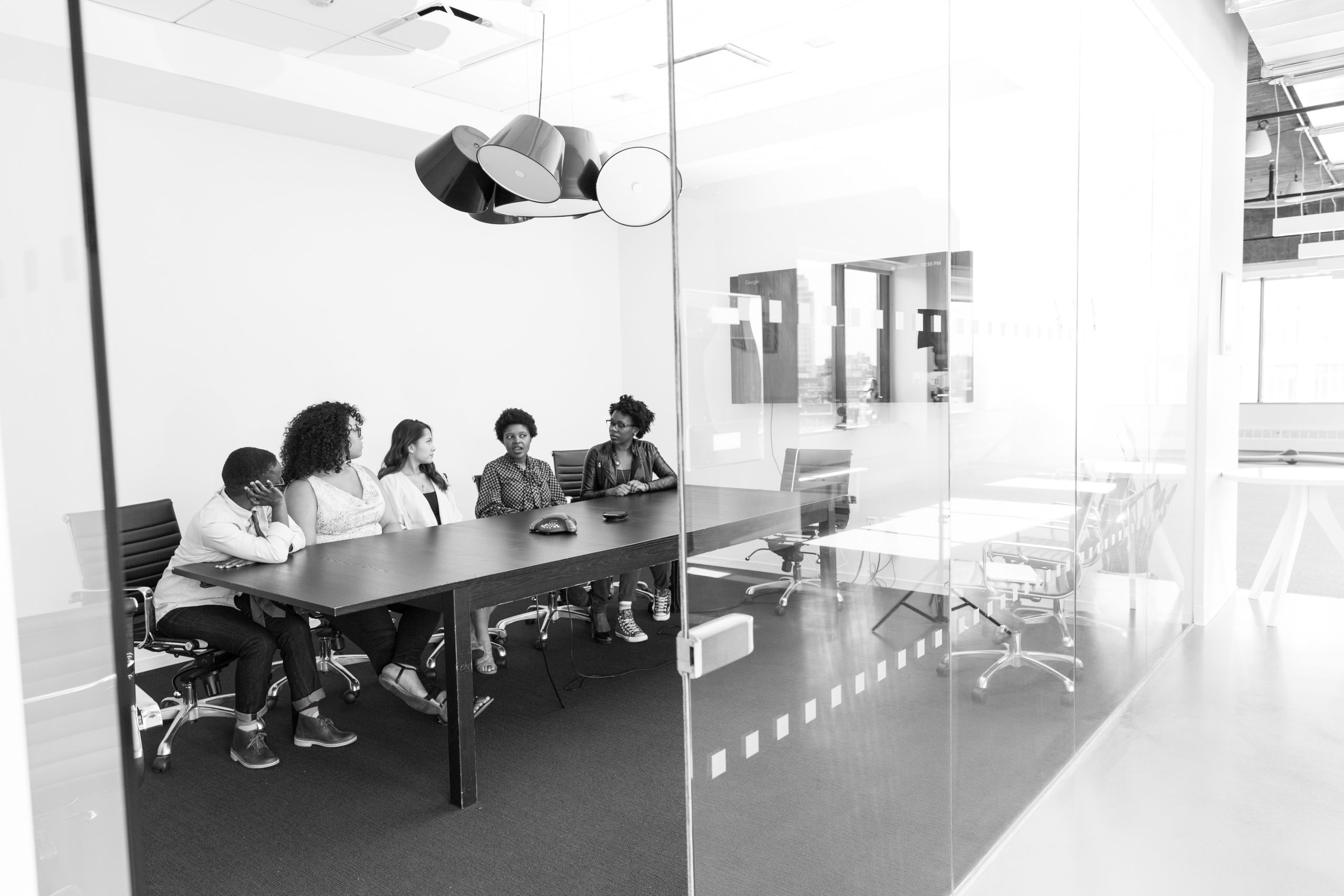
Leadership
A leader is someone who demonstrates what’s possible.
Leadership is the ability to influence and inspire people to a common goal. Bill Gates, founder of Microsoft, summarised leadership as the ability to empower others (Forbes 2019).
Employers value leadership in their employees, as leaders demonstrate the ability to communicate, collaborate and motivate. In addition to these qualities, some of the commonly identified characteristics of leadership include:
- Upholding integrity, ethics, and values
- Applying active listening skills
- Demonstrating passion and commitment
- Demonstrating a positive and empathetic approach
- Thinking innovatively and creatively
(Greenberg 2010)
There are many different leadership styles and approaches and we encourage you to think broadly when evidencing this skill. Evidence that highlights leadership might be:
- Decision-making capability
- Diplomacy
- Accountability
- Persistence and commitment
- Teamwork
Leadership may be exemplified in the tutorials, workshops, on-site visits and also in clubs/societies, through mentorship and/or project work.
Understanding what good leadership is, and the valued attributes of good leadership, may help with identifying your own style.
Evidence
Some of the types of artefacts that can be used to evidence your skills in this area include:
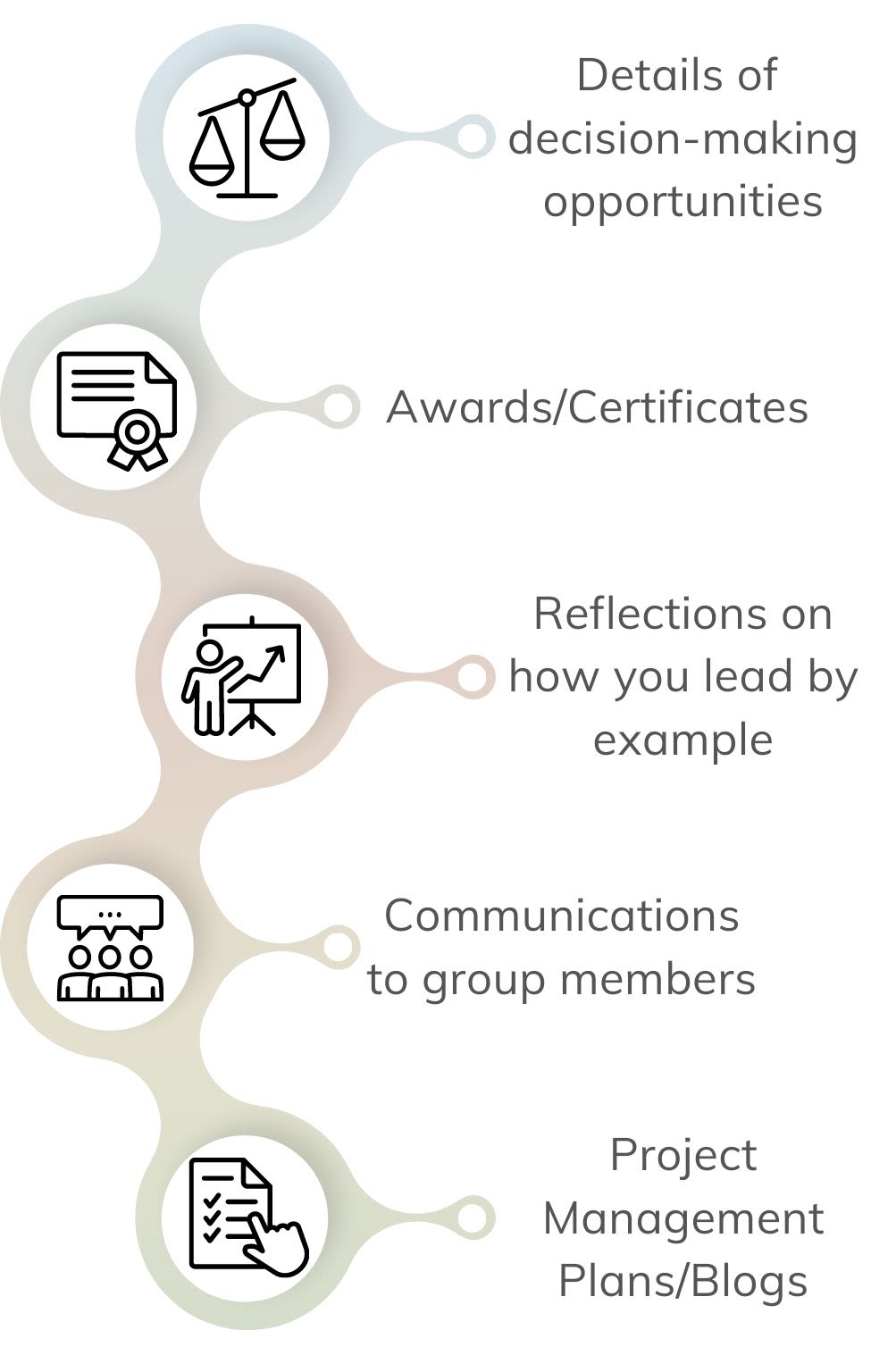
Further information/reading
To learn more about leadership, view the modules titled Adaptive Leadership and Leading Change.

Critical Reflection, Learning and Self-Management
Critical Reflection
Reflection is serious and careful thought, that helps the thinker create meaning from an experience, and informs their decisions in the future for the benefit of themselves, and of others.
At University College (UC), when you engage in any experience and 'learn by doing', we encourage you to reflect on that experience. This is because critical reflection increases your understanding of that moment in time - and generates thoughts and ideas about what to do in the future (in similar contexts or situations).
Evidence
Reflective writing pieces and artefacts with explanatory notes are two of the most common types of evidence students upload.
We recommend the following questions guide your critical reflections:
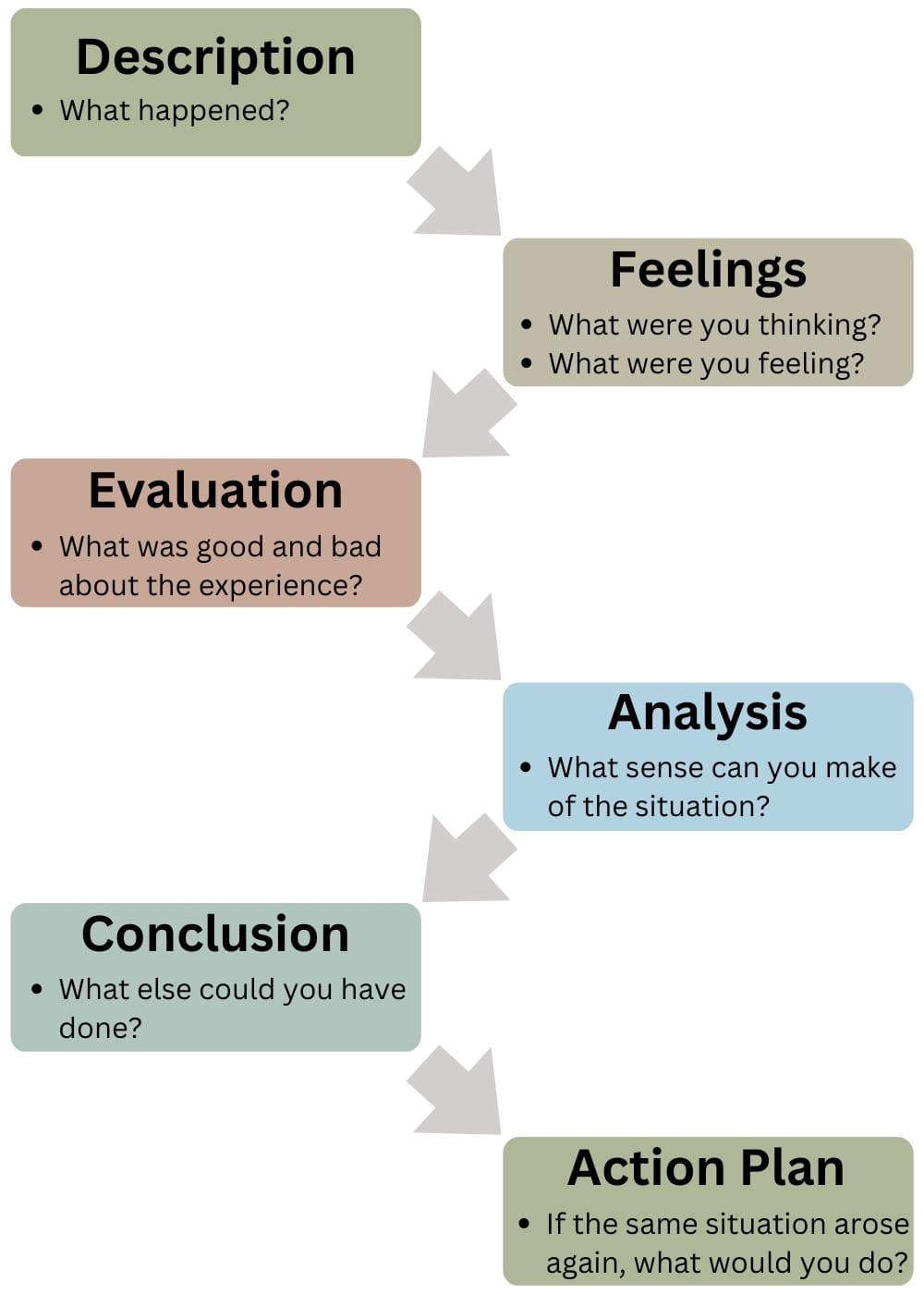
But please, look at the Reflective Cycle module as it explains each step!
Learning and Self-Management
This skill is about you taking control of your own learning and managing yourself personally and professionally.
We encourage you to provide evidence that highlights continuous learning, improvement and self-management. To do this, we recommend you to include some evidence around the following (informed by Employability Skills 2000+):
Evidence
Some of the types of artefacts that can be used to evidence your skills in these areas include:
Continuous Learning:
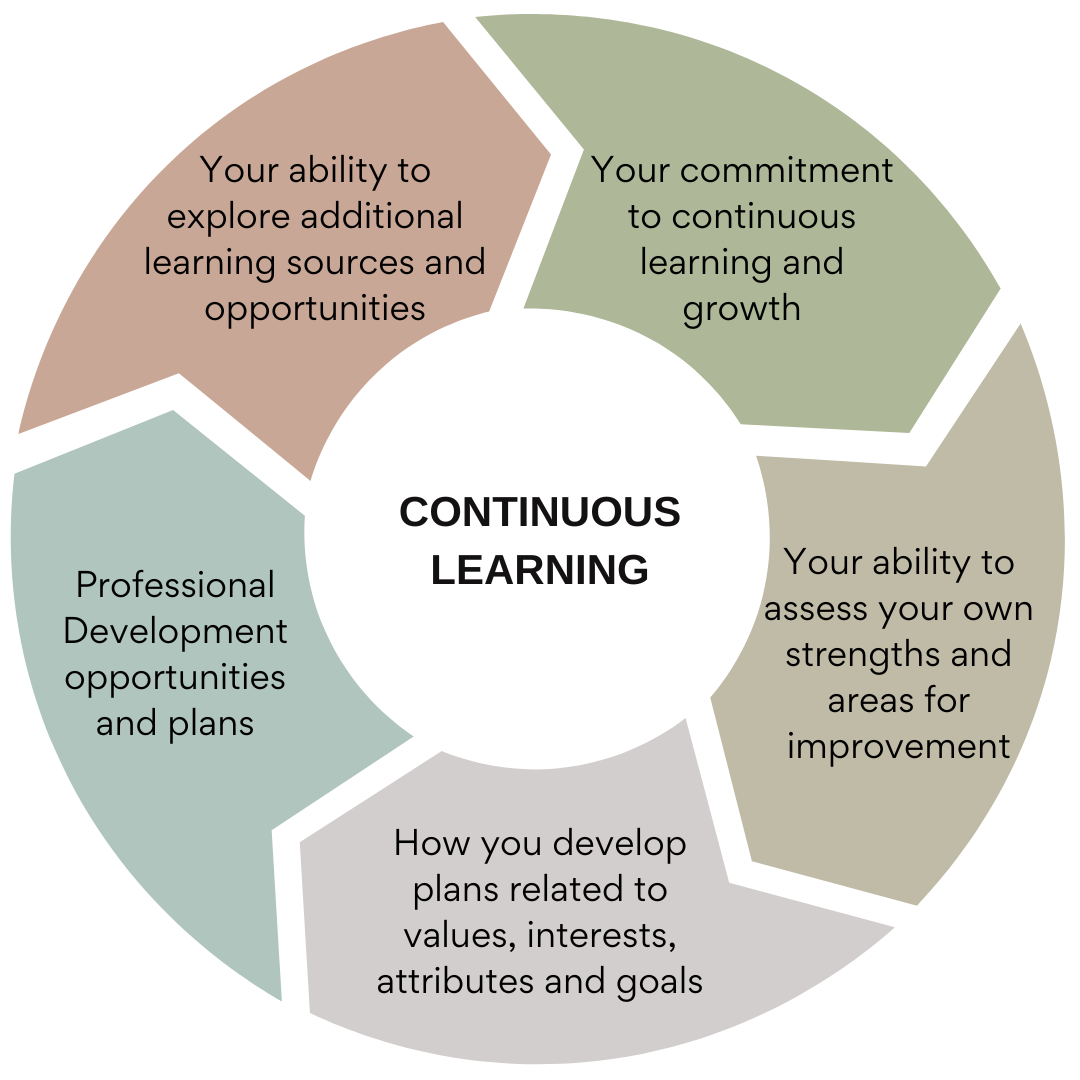
Self-Management:

Innovation and Entrepreneurship
Innovation and entrepreneurship can come in different forms and take on different shapes and sizes. Innovation can occur in products, services, or processes. Generally, the entrepreneurial process begins with an innovative idea. The characteristics of the entrepreneur play a role in making this innovation a reality.
Some widely agreed-upon entrepreneurial attributes include:
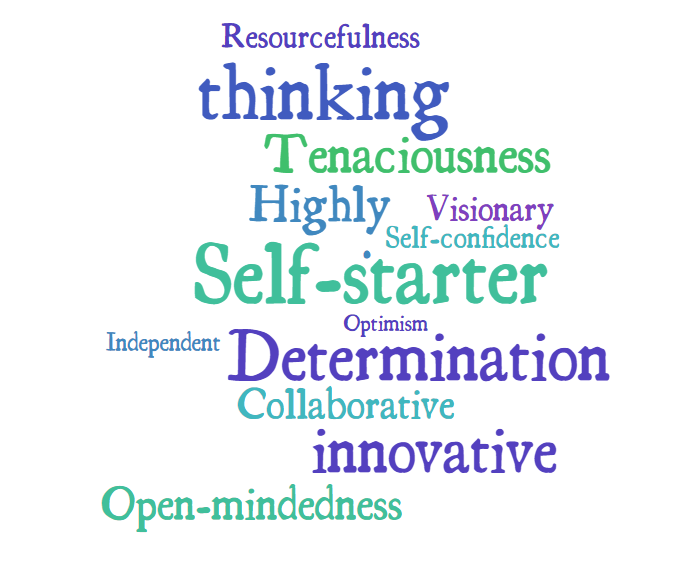
Employers value candidates and employees who demonstrate these entrepreneurial characteristics. They bring motivation, passion and initiative to the team, organisation, or business. For more information on entrepreneurial attributes, refer to the module here.
Evidence
To evidence your development in Innovation and Entrepreneurship you may consider artefacts that demonstrate your creativity and the ability to see things differently, such as:
- Participation in the design thinking process
- Brainstorms of product and/or service ideas
- Reflection or evaluation of innovative practice, products or services
- Documentation of goal setting and milestones towards achieving that goal
- Opportunities to seek leadership roles
Further information/reading
For more on entrepreneurship, including motivational factors and quotes (including the one from Bruce Bachenheimer above) please click on Business News Daily.
Refer to the module here for more information on Ethics and Entrepreneurship.
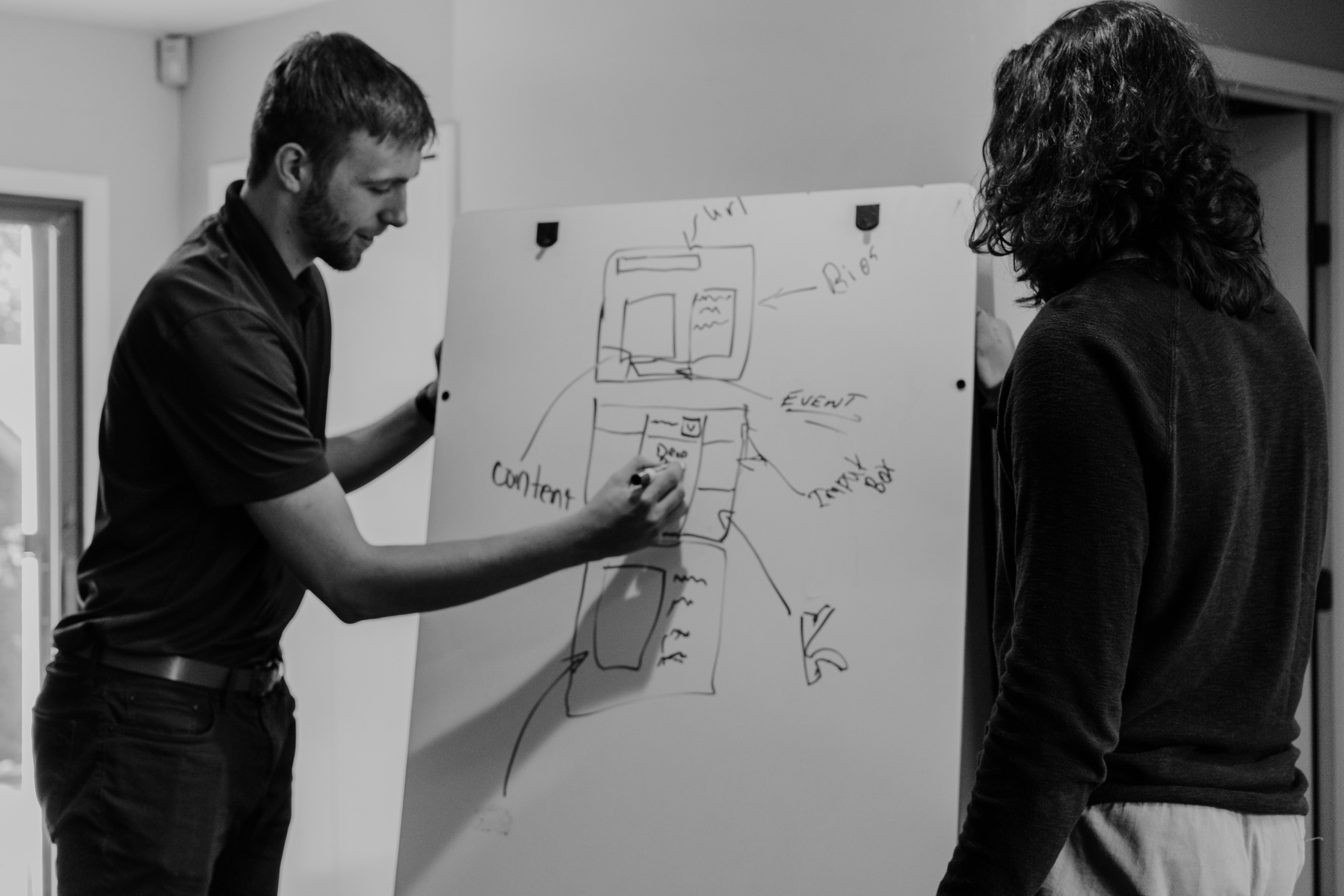
Creativity, Initiative and Enterprise
Creativity
Most definitions of creativity associate it with imagination, inventiveness and originality. Sometimes it is additionally associated with innovation. Creativity is therefore about producing something that is new, or original, typically to solve a problem or to communicate. It allows for self-expression, celebrating individual difference or talent and embracing diversity.
Creativity is inventing, experimenting, growing, taking risks, breaking rules, making mistakes, and having fun.
Employers typically value creativity in employees because it can result in problem-solving and productivity by inspiring others and bringing teams together. It can also lead to solutions that create greater efficiencies in the workplace.
Initiative
Initiative is about the ability to look at something and act independently without having to be told to. It involves making independent decisions based on good judgement and then putting in place a plan or a process to complete a task or address a problem.
Initiative is a sought-after skill because it often leads to the implementation of projects or programs (or 'initiatives') that eliminate or decrease costs, by reducing time, cutting back on other resources, and improving performance or productivity.
Enterprise
The word ‘enterprise’ is often associated with starting up a new or different initiative or business. However, as a behaviour or characteristic, it is about seeing opportunities. It is often linked to initiative, or creativity, because it involves drawing on imagination to do something new or different, or design and implement projects or processes.
To be 'enterprising', you need to think independently, strategically, and differently; analyse the facts behind opportunities before making decisions; and then have the skills, awareness, and confidence to act on your new initiative/idea.
Evidence
We recommend that you collect evidence against how you have developed or applied your creativity skills. The list below provides some examples of the attributes you could provide evidence against:
- Imagination
- Inventiveness
- Originality
- Creative Problem-Solving
- Independent Decision-Making
- Strategic Thinking
More concrete pieces of evidence or artefacts might therefore include:
- Creative or enterprising plans or proposals that address an inefficiency or problem in the workplace, community, or home
- Mind maps, diagrams or flowcharts highlighting a new process to reduce waste, cost and time
- Tools or methods you used to initiate an original project or process
- Plans, pictures or stories that capture how you saw an opportunity, explored the possibilities or evidence-base, and applied sound judgement to implement
- Photographs, sketches, process charts, or other visuals that highlight creativity or enterprise or initiative
Finally, we strongly encourage that you visit The TED Series: The Way We Work, which contains dozens of short talks on a variety of topics related to work.
References and Resources
Conference Board of Canada, 2019, Employability Skills 2000+, viewed on 6 September 2022.
Dwyer, J 2013, Communication for business and the professions strategies and skills, Pearson, NSW, Australia.
Forbes, 2013, What is Leadership? Viewed on 7 September 2019.
Gibbs, G 1988, Learning by doing: a guide to teaching and learning methods, Further Education Unit, Oxford Brookes University.
Greenberg, J, 2011, Behaviour in organizations, Pearson Education, New Jersey.
Patterson, R 2017, ‘7 ways to improve your critical thinking skills’, CollegeInfoGeek, blog, viewed on 6 September 2019, https://collegeinfogeek.com/improve-critical-thinking-skills/
Skills You Need, 2017, Skills you Need, viewed on 6 September 2019.
The Complete Leader 2023, Planning and Organization, viewed 24 January 2023, <https://www.thecompleteleader.org/competencies/planning-organization>.
Other Useful Sources of Information
Problem Solving (Business Dictionary)
Entrepreneurship (Business News Daily)
Financial Literacy (Learning Potential)
Media Literacy in the Classroom (Common Sense Org)